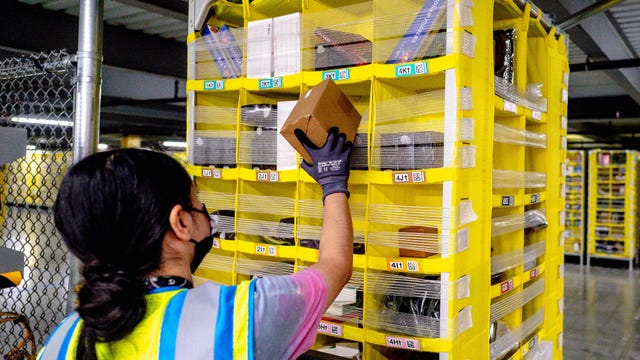Amazon Orders Employees Back to Office for Collaboration Boost
Amazon mandates a five-day office return to enhance collaboration and strengthen workplace culture, sparking debates on employee satisfaction and productivity.

Key Points
- Amazon
is requiring corporate employees to return to the office five days a week starting January 2, 2025, to enhance collaboration and company culture.
- The company plans to streamline operations by increasing the ratio of individual contributors to managers, aiming to reduce bureaucracy.
- This shift presents challenges regarding employee satisfaction and retaining talent in a post-pandemic work environment.
As we navigate the evolving landscape of workplace culture, Amazon has made a decisive move that is capturing headlines and stirring conversations: a mandatory return to the office for all corporate employees five days a week, effective January 2, 2025. This policy marks a significant departure from the hybrid work model that many companies, including Amazon, adopted during the
pandemic. In a memo, CEO
emphasized that this change is essential to foster collaboration, ownership, and the unique culture that has driven Amazon's success.
The Rationale Behind the Decision
Andy Jassy believes that in-person work is crucial for reinforcing Amazon's culture. He argues that being physically present allows for better collaboration, brainstorming, and more effective decision-making. According to Jassy, the last fifteen months in which employees were required to be in the office at least three days a week have convinced leadership of the tangible benefits of working together face-to-face.
This decision is not made lightly. Jassy noted that past experiences indicate that having a strong, connected team is vital for innovation and success. He highlighted, “We continue to believe that the advantages of being together in the office are significant”. This sentiment aligns with a growing trend among other tech giants, who are gradually encouraging their employees back into their physical offices.

Implications for Employees
The new mandate raises important questions regarding employee morale and job satisfaction. Many Amazon employees have expressed concerns about the change, illustrated by the protest held at Amazon's
headquarters last year. Workers voiced grievances not only about the increase in required office days but also about layoffs and shifts in company policy regarding climate initiatives. As we reflect on these actions, it’s clear that workplace culture is undergoing a significant transformation.
While Jassy acknowledges that there might be “extenuating circumstances”, such as personal emergencies, the overarching expectation is clear: employees should be in the office. This policy contrasts sharply with the flexibility many workers have enjoyed over the last few years, leading to potential challenges in employee retention and satisfaction.
A Strategic Shift: Fewer Managers, More Empowerment
Alongside the push for office attendance, Amazon is embarking on a restructuring initiative that aims to reduce bureaucratic layers within the organization. Jassy announced plans to increase the ratio of individual contributors to managers by at least 15% by the end of Q1 2025. This strategic pivot is designed to streamline operations, enhance decision-making processes, and empower employees at all levels.
By flattening the organizational hierarchy, Jassy aims to eliminate unnecessary delays and inefficiencies, thereby encouraging a culture of ownership and fast-paced decision-making. As he explained: “Having fewer managers will remove layers and flatten organizations more than they are today”. This approach could re-energize the Amazon workforce, enhancing employee engagement by allowing more direct involvement in decision-making.

An Opportunity for Transformation
This bold shift presents an opportunity for Amazon to reinforce its workplace culture while also addressing some of the stressors that emerged from the remote work period. The challenge lies in effectively managing the transition back to the office while prioritizing employee well-being and maintaining a flexible work environment when necessary.
For Amazon, the aim is not only to boost productivity but also to cultivate a sense of community among employees. As workers adjust to this new policy, the company has pledged to support employees through this transition, understanding that many may have restructured their lives around remote work.
In conclusion, Amazon's mandate for a five-day return to the office by January 2025 signifies a significant pivot in workplace dynamics. While this decision could potentially enhance collaboration and innovation, it also raises important questions about employee satisfaction and retaining talent in an evolving professional landscape. It’s a challenge that many companies face as they navigate the balance between productivity and employee advocacy in today’s world.


